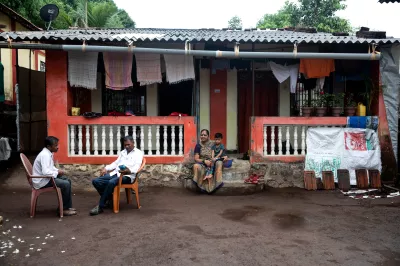Beyond Capital Gains: The Multiplier Effect of Youth Savings
In a recent New York Times article, Nick Kristof told the story of Alfred Nasoni, a farmer who pulled his eldest son out of school and cultivated only part of his plot due to financial constraints. Yet, Alfred also happened to spend a considerable amount of the family’s budget on alcohol, cigarettes, and women.
Nasoni’s story isn’t surprising: The toll of deep financial strain often promotes destructive decisions and low productivity among impoverished populations. The plight of the poor results in what the article refers to as a “[…] vicious circle: despair leads people to self-medicate in ways that compound the despair.”
However, the article gives reason for hope—literally. By joining a savings group, and building assets, Nasoni’s wife, Biti, was able to build a profitable business, leading him to follow suit on his own business endeavor. Not only did this result in direct financial gains, but these gains were multiplied by an improved future outlook and heightened aspirations. With a path out of poverty within sight for the first time, the opportunity cost of destructive behavior became significantly larger. This led Nasoni to more positive financial and non-financial behavior — which included cutting back on the women and drinking.
This is not an isolated phenomenon.
Prominent economist Esther Duflo, of the Massachusetts Institute of Technology, and author of Poor Economics, has discussed the power of hope in creating results larger than their interventions.
In her evaluation of a program located in the Indian state of West Bengal, she found that the delivery of assets to the extreme poor, by microfinance institution Bandhan, resulted in positive outcomes that went far beyond their initial investment—livestock, a small stipend, and training sessions to help recipients learn to manage the two. The program also included a mandatory savings component. The outcome was remarkable: 18 months post intervention, beneficiaries’ earnings were up by 20 percent and their food consumption was 15 percent larger than their non-beneficiary counterparts. Savings amongst recipients went up considerably as well.
As stated by Duflo at a Harvard University lecture in early May—
What is interesting about this program is that the income gains seemed to have spread much beyond the scope of the initial intervention. In fact, in rupee terms, the increase in non-farm small enterprise income exceeded the gain in livestock income, despite the fact that beneficiaries almost all received livestock.
This idea of asset building as a trigger for increased productivity and earning potential is powerful, and is yet another counter to critics of financial inclusion and savings programs, who claim that there is little benefit from these initiatives due to the inherent financial constraints of the poor.
A paper being released this week by the YouthSave Initiative entitled Creating Creatures of Habit: Nudge Saving in Youth, takes the potential of these “asset effects” a step further, positing that the effects will be even greater when interventions begin earlier in life. The paper will be released this Thursday at an event held at the New America Foundation that will highlight the most recent insights in the field of youth savings.
Author Payal Pathak cites an example from Uganda’s SUUBI project, which provided orphans matched savings accounts and life skills training. As a result, participants experienced “improved educational outcomes compared with peers without those services, including greater aspirations and confidence for pursuing higher education in the future.” Additionally, participants reported a shift in attitude against risky behavior such as unsafe sex. It is clear here that the same multiplier effect seen in adults translates to youth as well.
Pathak reviews the disproportionate mental toll that financial decisions, particularly those relating to savings, can take on the poor. She asserts that “[f]or the poor, who are already taxed daily by financial stress and conditions of poverty, the choice to save regularly may be tough to make since they are faced with other conflicting financial considerations, such as how to put food on the table, pay for medical bills, or finance children’s education.” Because the margin of error is so much narrower for the poor, the stress in making these financial decisions take on a psychological cost that can hinder the development of key capabilities necessary for savings, such as planning and will power.
Financial inclusion certainly plays a role in alleviating this problem, offering the poor the mental relief of safe storage, and offering a vehicle for easier money management. However, the psychological barriers can still be daunting. According to the paper, these barriers can be addressed through savings habit formation, ‘automating’ the practice so as to ease the mental strain associated with the financial decision and create a more conducive environment for savings. This concept becomes all the more powerful in the context of children.
By intervening early, savings-focused programs and policy can harness the critical developmental phases of youth to capitalize on the psychological impacts of savings, as well as extend the time horizon for asset accumulation. But perhaps more importantly, youth programs can preclude poverty in adulthood by focusing more on preventative measures, targeting a population unburdened by the weighty baggage of emotional setbacks and poor financial decisions that could crush their hope for a more prosperous future.




Add new comment